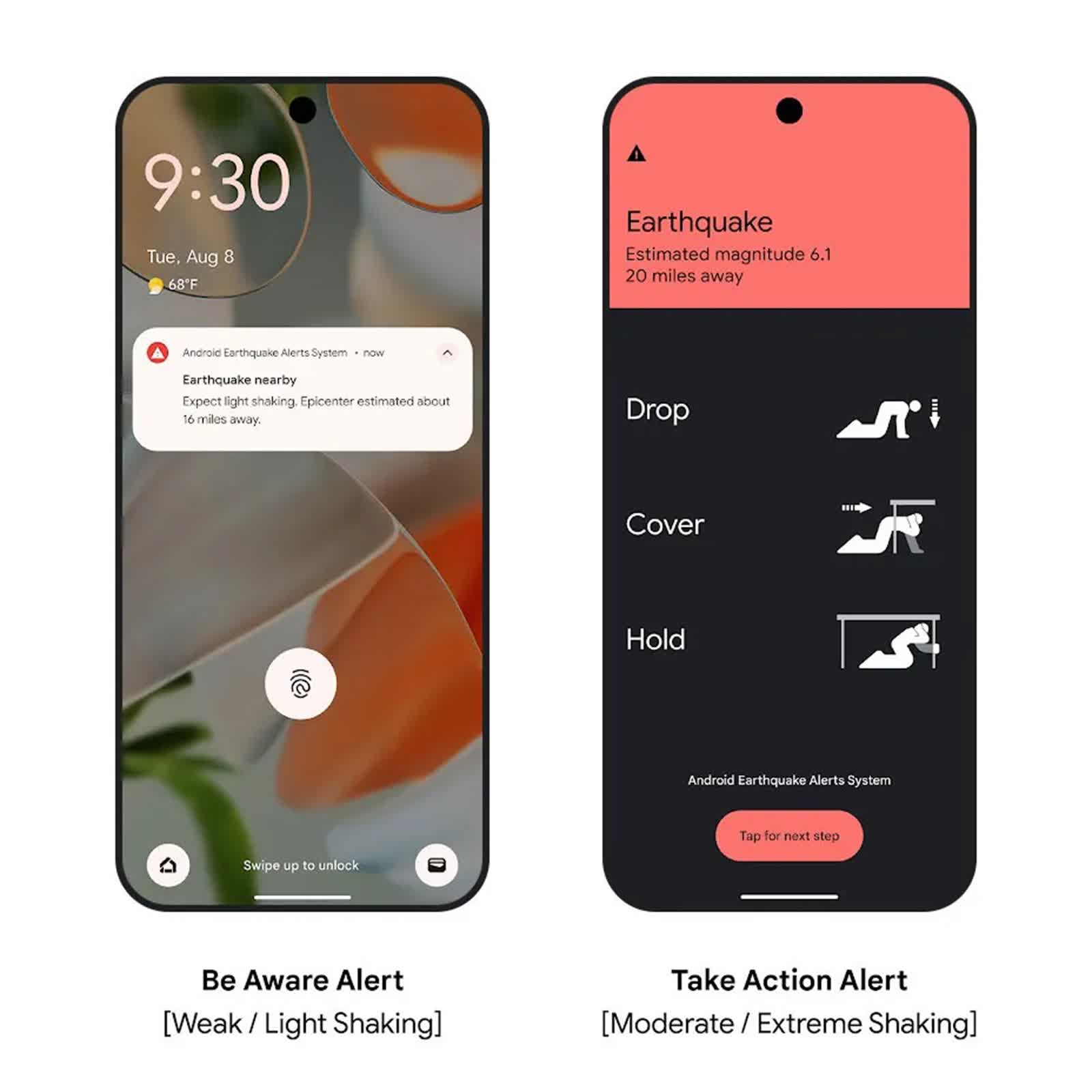Why it matters: Between 2021 and 2024, Google leveraged the motion sensors on more than two billion Android phones to create a global network capable of detecting earthquakes and sending automated warnings to millions across 98 countries. The results of this massive project reveal a technology that challenges traditional seismology and has the potential to improve public safety on a worldwide scale.
Unlike conventional systems that use dedicated, expensive seismic instruments, Google’s Android Earthquake Alerts system leverages the sheer scale of smartphones, which continuously collect motion data unless users opt out. By analyzing inputs from these devices, the technology not only identified the origins and strength of more than 11,000 earthquakes, but did so with accuracy rivaling that of specialized seismometers.
Google’s report, published in Science, marks the first comprehensive analysis of the system’s performance since it quietly launched three years ago. During that time, the number of people receiving earthquake warnings surged tenfold, fulfilling a company’s promise to bring alerts to many who had never had access before.
The alert system’s edge is not in any one device’s precision, but in numbers. Algorithms developed by Google piece together signals from phones scattered across broad regions, contending with local differences in geology, building materials, and the varying ways different phone models register movement. This method allows the system to spot even faint tremors by recognizing patterns of collective shaking.

However, limitations remain, especially when it comes to the world’s most powerful earthquakes. In February 2023, two devastating quakes in Turkey underscored some of these challenges. The system initially underestimated the severity of these events, sending 4.5 million alerts that, in hindsight, should have been even more urgent. When revisiting the incident with upgraded algorithms, Google’s team found that improved analysis would have triggered stronger ‘TakeAction’ alerts, reaching as many as ten million devices.
“This shows they have been working to improve the system since 2023, with tangible positive results,” Harold Tobin, a seismologist at the University of Washington, told Nature. “For a public-safety system like this one, the Android team has a responsibility to be very transparent about how it works so that civil authorities can make those judgment calls themselves.”
Transparency has become a key point of scientific debate surrounding the system. While Google claims to be open about how its technology works, the proprietary nature of its algorithms and privacy concerns tied to user data remain barriers to broader scrutiny.
“It’s very impressive – most countries don’t have an earthquake early-warning system, and this can help provide that service,” said Allen Husker, a seismologist at the California Institute of Technology.
He added that independent scientific access to the system’s data and algorithms would help build confidence in its reliability. Google describes its earthquake alert as a supplemental safety measure, not a replacement for official systems run by governments or scientific agencies.
“That really is the origin of this paper,” said Richard Allen, a seismologist at the University of California, Berkeley, and a visiting faculty member at Google. “I hope the community will recognize that and appreciate that.”
Source link

